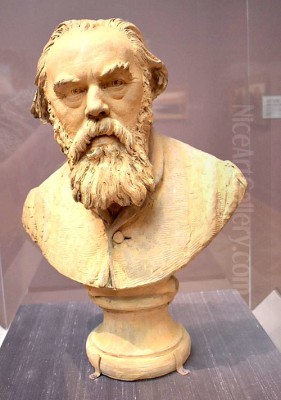
Albert Ludovici, recorded as living between 1884 and 1923, emerges from historical accounts as a figure of interest within the British art scene. While details surrounding his life present complexities, the available information paints a picture of an individual connected to a significant artistic lineage, contributing as a painter, and engaging with the intellectual currents of his time. His work, particularly known for depicting scenes of social life and interiors, reflects a blend of contemporary European art movements and distinctive aesthetic influences.
Family Heritage and Artistic Roots
The Ludovici name carries considerable weight, originating from Bologna, Italy. The family established itself in Britain during the 19th century, fostering a legacy that reportedly spanned three generations of artists. This rich background included notable ancestors, potentially encompassing figures of ecclesiastical authority and discerning art connoisseurs who were associated with the famed Villa Ludovisi, a repository of classical and Baroque sculpture. This heritage suggests an environment where art was not merely a profession but an ingrained part of family identity and history.
Albert Ludovici himself was born in London, England. Some accounts mention his mother as Marie Cals and note that his son, also named Albert Ludovici, followed in the artistic and literary path, indicating a direct continuation of the family's creative pursuits. This familial connection underscores the deep-seated relationship Albert Ludovici had with the art world from his very beginnings.
Education and Intellectual Formation
Ludovici's education was reportedly private, encompassing studies both within the United Kingdom and abroad. A significant period was spent in Germany, where he is said to have immersed himself in the challenging philosophical works of Friedrich Nietzsche. This intellectual engagement suggests a mind curious beyond the canvas, delving into profound questions of existence and culture. His time abroad also facilitated the acquisition of multiple languages, equipping him with broader cultural and communicative tools.
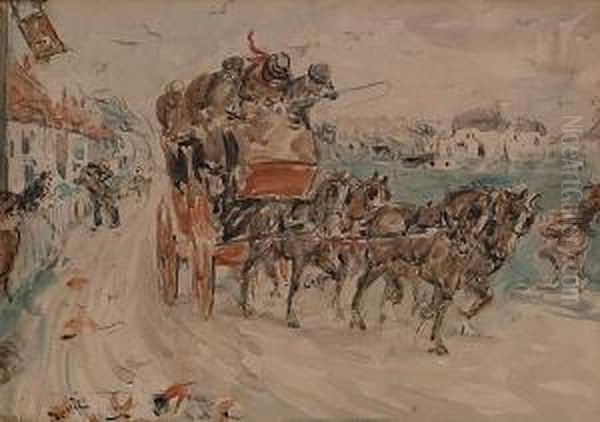
This aspect of his background, focusing on philosophical study and linguistic proficiency, adds a layer to the understanding of Ludovici, portraying him not just as a visual artist but as an individual engaged with the significant intellectual debates and figures shaping European thought at the time. It hints at a depth that might inform the perspectives or themes present in his artistic output.
Artistic Development and Key Influences
Albert Ludovici's artistic journey was shaped by several prominent influences. He operated within a context rich with evolving styles, drawing inspiration from French Naturalism and the revolutionary techniques of Impressionism. These movements, championed by artists like Jean-François Millet and Gustave Courbet for Naturalism, and Claude Monet, Edgar Degas, and Pierre-Auguste Renoir for Impressionism, emphasized direct observation and capturing fleeting moments of light and life.
A particularly significant influence came from the renowned expatriate artist James Abbott McNeill Whistler. Ludovici is noted to have had close associations with Whistler, absorbing lessons in colour aesthetics and spatial arrangement. Whistler's own synthesis of Western painting traditions with the principles of Japanese art, particularly the asymmetry and flattened perspectives found in Ukiyo-e prints by masters like Hokusai and Hiroshige, seems to have resonated deeply with Ludovici.
Furthermore, Ludovici learned about Japanese artistic principles, especially regarding spatial composition, directly from his father, Albert Ludovici, Sr., who was also an artist. This familial transmission of specific aesthetic ideas highlights the continuity within the Ludovici artistic line. He skillfully integrated these diverse strands – the realism of Naturalism, the light and brushwork of Impressionism, Whistler's tonal harmonies, and Japanese spatial concepts – into his own unique style. Other Impressionists like Camille Pissarro and Alfred Sisley also contributed to the artistic milieu he navigated.
Painting Style and Subject Matter
Ludovici's resulting style was characterized by this eclectic blend. He applied his understanding of Japanese spatial dynamics, often seen in the arrangement of figures and objects within the frame, particularly to paintings featuring costume and fashion ('costume pieces'). This was combined with Whistler's sophisticated approach to colour and an Impressionistic handling of paint, suggesting textured surfaces and an interest in capturing light effects.
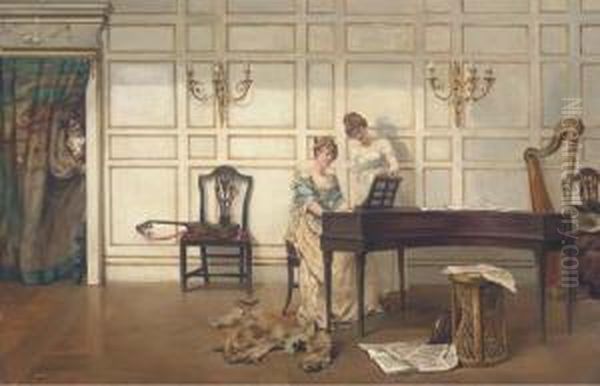
His primary subjects were scenes of society and everyday life. He became known for his depictions of interiors and portraits, often capturing the English upper classes at leisure. These works provide glimpses into the social customs, fashions, and environments of his era. Unlike the more radical subjects of some contemporaries, Ludovici often focused on elegant social gatherings, domestic settings, and moments of quiet activity, rendered with a sensitivity to atmosphere and detail. His work can be seen in dialogue with other painters of modern life, such as James Tissot or perhaps even John Singer Sargent, who also depicted society figures and scenes.
Notable Works and Commercial Ventures
Among his representative works, Monsieur Coulon’s Dancing Class stands out. This painting likely exemplifies his ability to capture social settings and intricate figure arrangements, potentially showcasing the influence of artists like Degas, famous for his ballet dancers, while retaining Ludovici's own stylistic signature, possibly incorporating the aforementioned Japanese spatial awareness and Whistlerian colour sense.
Beyond fine art, Ludovici engaged in commercial applications of his talent. He is known to have created illustrations, including works related to the novels of Charles Dickens. This connection led to a particularly popular venture during the jigsaw puzzle craze of 1908-1910. Ludovici contributed significantly to a series of puzzles based on Dickens's works, painting scenes that were then reproduced as puzzles. Examples like The First of May and images from David Copperfield became sought-after collectibles, bringing his art into homes as a form of entertainment and popular culture. He reportedly created sixteen paintings specifically for this Dickens puzzle series, demonstrating a considerable commitment to this project. He is also mentioned as having designed greeting cards.
Professional Affiliations and Recognition
Throughout his career, Albert Ludovici actively participated in the established art institutions of Britain. He exhibited his work at prestigious venues, including the Royal Academy (RA) and the Royal Society of Arts (RSA). His involvement extended to membership in key organizations.
He joined the Society of British Artists (SBA), later granted a Royal charter to become the Royal Society of British Artists (RBA), in 1878. By 1886, he was serving as a committee member for this society. (Note: These dates, particularly 1878 and 1886, appear inconsistent with the provided birth year of 1884, reflecting complexities in the historical record as presented). Membership and exhibition history within these respected institutions indicate that Ludovici achieved a level of recognition and acceptance within the mainstream art world of his time.
Relationships with Contemporary Artists
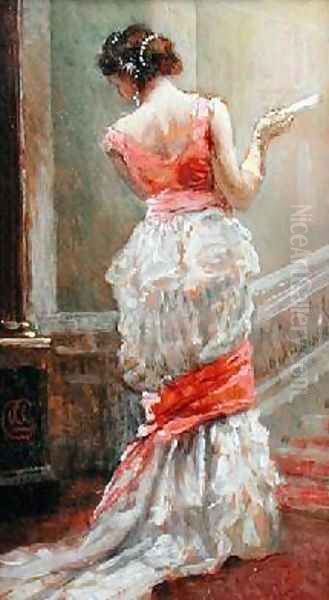
Ludovici's career unfolded within a vibrant artistic community, involving interactions with prominent figures. His relationship with James Abbott McNeill Whistler was clearly formative, involving mentorship and shared aesthetic interests, though it wasn't without friction. Reports suggest Ludovici occasionally voiced public criticism of certain aspects of Whistler's work, hinting at a dynamic relationship that included both admiration and independent artistic judgment.
He also had connections with other major artists. The celebrated portraitist John Singer Sargent is mentioned as having created an illustration related to one of Ludovici's dance class performances, suggesting mutual awareness and perhaps professional courtesy within their circle.
The Ludovici family's connections extended further. Albert's father, identified in some sources confusingly as Anthony Ludovici (who was historically Albert Jr.'s son, the writer), is said to have served for a time as the private secretary to the monumental French sculptor Auguste Rodin. While this association initially aided Rodin, it reportedly ended due to personal disagreements. These interactions place the Ludovicis, across generations, firmly within the network of significant European artists of the late 19th and early 20th centuries.
Broader Intellectual and Political Dimensions
The available accounts attribute more than just artistic pursuits to Albert Ludovici (1884-1923), incorporating elements strongly associated with his namesake son, the writer Anthony Mario Ludovici (1882-1971). These sources describe him as a prolific writer with distinct, and often controversial, philosophical and social views. These views reportedly included a disdain for the masses, a strong belief in the importance of heredity in human affairs, anti-Semitic sentiments, advocacy for racial eugenics, and a conservative defense of aristocracy.
This same narrative thread places him in service with the British intelligence agency MI6 during the First World War. Following the war, health issues are cited as the reason for his retirement from service. He is also described as becoming disillusioned with the nature of war honours, leading him to resign from a British honour society or legion. These biographical details, whether accurately attributed to the painter or reflecting a conflation with his writer son, add a complex dimension of political engagement and strong ideological leanings to his profile.
Controversies and Later Life Narratives
Further complicating the picture are mentions of potential, though unsubstantiated, links to Nazi sympathies. The sources presenting this information also tend to caution that direct evidence is lacking and that these associations are separate from his artistic style and output. Such claims, often linked to the known views of Anthony M. Ludovici, contribute to a controversial aspect of the Ludovici name.
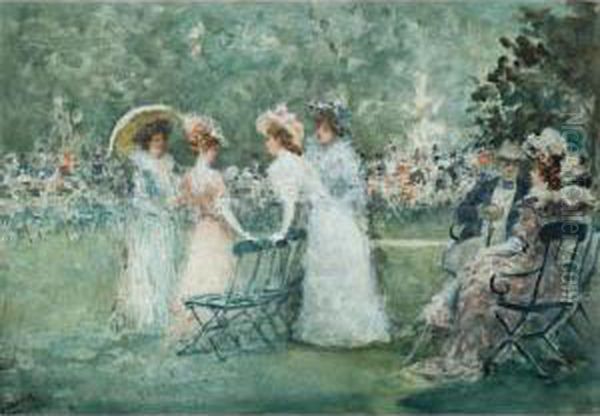
Regarding his later life and legacy, one account describes a wish expressed after his death (linking contextually to Anthony M. Ludovici's death in 1971) for part of his estate to fund the publication of an autobiography titled An Anti-Feminist's Confessions. This work, which reportedly took nearly half a century to be published, is said to cover his family background, upbringing, education, and core philosophical ideas. Attributing these later-life details and specific writings to the figure dated 1884-1923 highlights the persistent merging of identities in the available records.
Legacy and Historical Evaluation
Evaluating Albert Ludovici (1884-1923) requires navigating the conflated information presented. As a painter, his primary contribution lies in his skillful synthesis of Impressionistic techniques, Whistlerian aesthetics, and Japanese spatial concepts. He specialized in portraits and interior scenes, particularly capturing the leisured life of the British upper classes, leaving behind a visual record of his time. His work was recognized through exhibitions at major institutions like the Royal Academy and his involvement with the Royal Society of British Artists.
His foray into commercial art, especially the popular Dickens-themed jigsaw puzzles, demonstrates an ability to connect with a broader public beyond the gallery system. This venture significantly contributed to the puzzle craze of the early 20th century and cemented his name in the realm of popular illustration derived from literary classics.
While he enjoyed a degree of reputation during his lifetime, his lasting artistic influence is perhaps most felt in the way his work reflected and contributed to the dialogue between Western painting traditions and the growing appreciation for Japanese art. His specific approach to composition and figure depiction may have informed subsequent artists interested in similar themes or stylistic fusions. The additional layers concerning his purported intellectual pursuits, writings, and controversial views, largely drawn from the life of Anthony M. Ludovici but attributed in sources to the painter, create a complex and debated historical figure whose full story remains partially obscured by biographical inconsistencies.